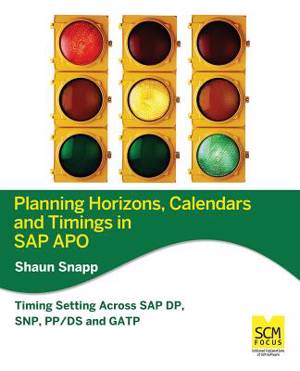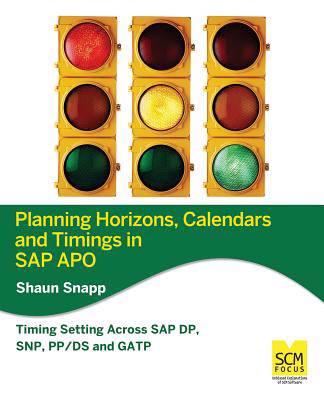
- Retrait gratuit dans votre magasin Club
- 7.000.000 titres dans notre catalogue
- Payer en toute sécurité
- Toujours un magasin près de chez vous
- Retrait gratuit dans votre magasin Club
- 7.000.0000 titres dans notre catalogue
- Payer en toute sécurité
- Toujours un magasin près de chez vous
66,45 €
+ 132 points
Description
Planning horizons and timing settings are critical to controlling the behavior of planning applications. But few people understand the impact that timing settings in one APO application have on other APO applications, and what implications they have for controlling system output. APO is the most fully-featured supply chain planning suite on the market, and its sheer number of timing settings makes it one of the most complex as well! Keeping these settings straight and associating the timings across the modules-as well as coordinating the timings with the connected systems-is a challenge in APO. If you would like to better understand the timing settings in APO and other advanced planning systems, or if your company is planning to implement APO, this book is for you. Here you will learn about the timing settings, planning horizons and calendars in four of the most commonly-implemented APO applications (DP, SNP, PP/DS and GATP), and how timing settings in one APO module interact with and impact upon the timing settings in the other APO modules. By reading this book you will: - Gain a comprehensive overview of timings in the four most popular APO applications: DP, SNP, PP/DS and GATP. - Get an overview of what is created in each application and what is passed between the modules. - Understand how the planning horizons, calendars and timing settings of DP, SNP, PP/DS and GATP relate to each other, how they influence the planning output, and how they connect with SAP/ERP. - Be able to differentiate between the various timing settings in APO and explain how they relate to one another. - Benefit by getting a head start on understanding timing settings before the demo or proof-of-concept stage of a project. - Avoid costly implementation errors by learning how to navigate APO's complex timing settings. - Understand timing setting directions (backward and forward). - Learn how to support a global business with a single APO application.
Spécifications
Parties prenantes
- Auteur(s) :
- Editeur:
Contenu
- Nombre de pages :
- 236
- Langue:
- Anglais
Caractéristiques
- EAN:
- 9781939731005
- Date de parution :
- 11-04-13
- Format:
- Livre broché
- Format numérique:
- Trade paperback (VS)
- Dimensions :
- 190 mm x 235 mm
- Poids :
- 412 g

Les avis
Nous publions uniquement les avis qui respectent les conditions requises. Consultez nos conditions pour les avis.






